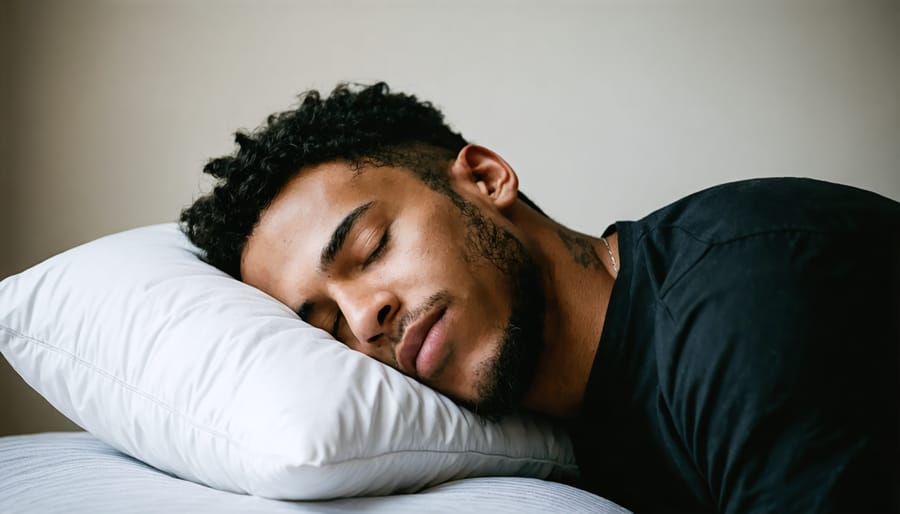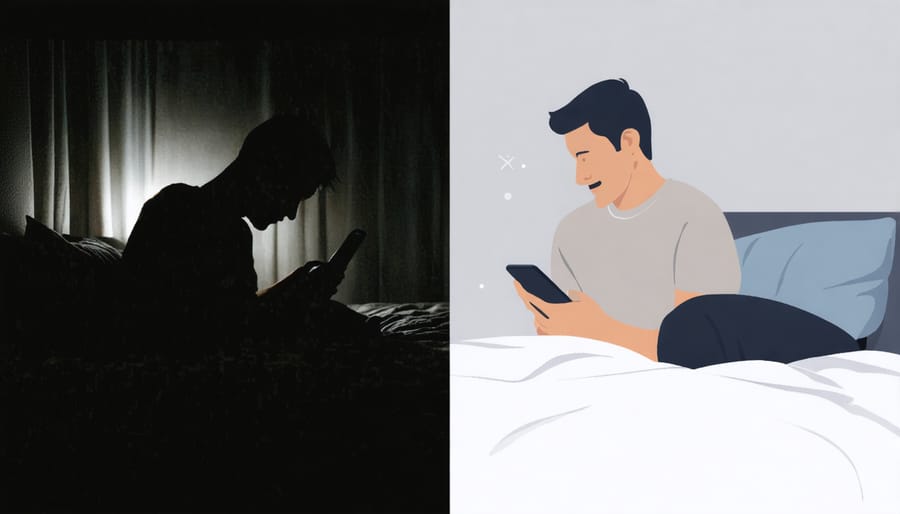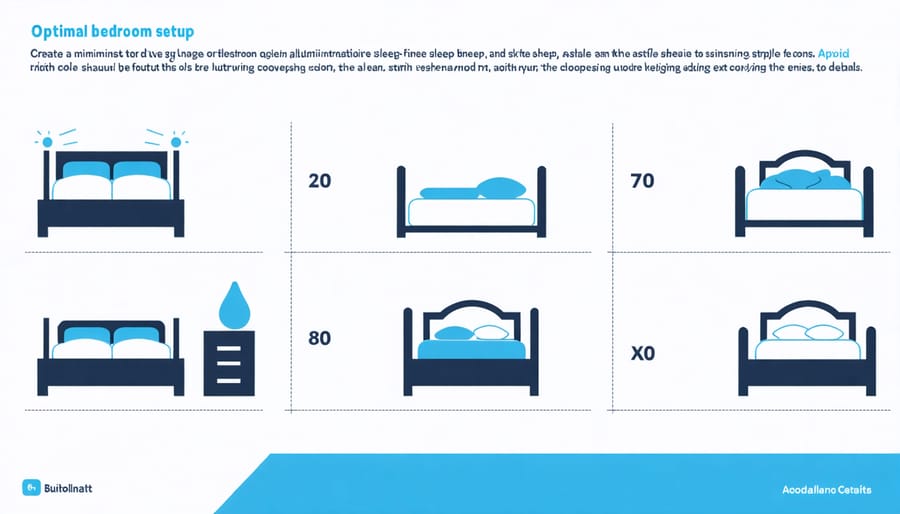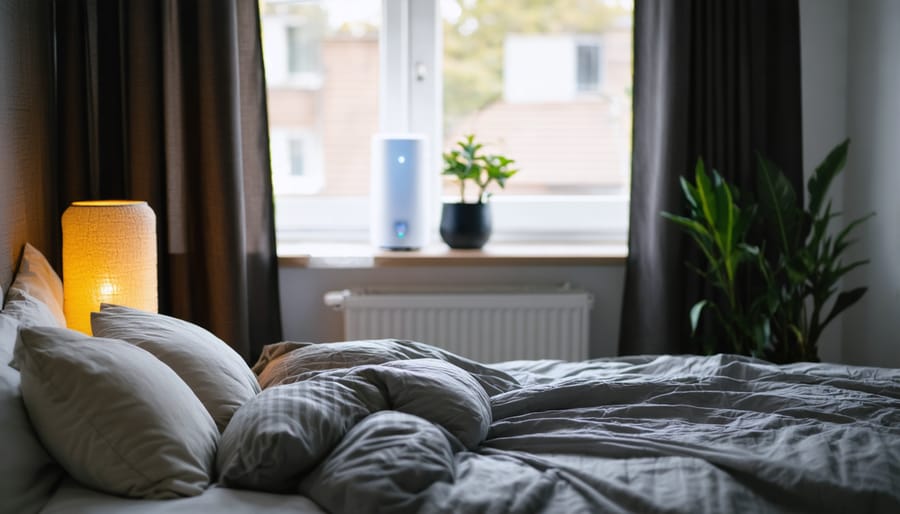Waking up with throbbing temples or a pounding headache can turn a night of rest into an exhausting ordeal. Sleep headaches affect millions of Canadians, disrupting both sleep quality and daily functioning. While these headaches might seem mysterious, they often stem from identifiable causes like sleep position, blood pressure changes, or underlying sleep disorders. Understanding why you’re experiencing headaches during sleep is the first crucial step toward finding relief and reclaiming restful nights. From tension headaches triggered by poor neck alignment to more serious conditions like sleep apnea, these nighttime nuisances can signal various health concerns that deserve attention. The good news? Most sleep-related headaches can be effectively managed once you identify their root cause. This guide will help you understand what’s behind your nighttime headaches and provide practical solutions to prevent them, ensuring you wake up refreshed instead of reaching for pain relievers.
Common Causes of Sleep-Related Headaches
Sleep Position and Neck Strain
Your sleeping position plays a crucial role in the development of sleep-related headaches. When your neck isn’t properly aligned with your spine during sleep, it can create tension in your muscles and nerves. Side sleeping with improper pillow support can force your head into an awkward angle, while stomach sleeping often requires you to turn your head to one side for extended periods. Back sleeping typically provides the best alignment, but only when your head isn’t propped too high or too low. The key is maintaining a neutral spine position where your head, neck, and back form a straight line. This helps prevent muscle strain and tension that can lead to morning headaches.

Sleep Environment Issues
Your sleep environment plays a crucial role in headache development during rest. Poor room temperature can trigger headaches, with experts recommending keeping your bedroom between 18-21°C (65-70°F) for optimal sleep. Excessive heat or cold can cause blood vessels to dilate or constrict, potentially leading to head pain.
Lighting also matters significantly. Even small amounts of light from electronic devices or street lamps can disrupt your sleep cycle and contribute to headaches. Using blackout curtains or a sleep mask can help create the dark environment your body needs for quality rest.
Air quality affects your breathing during sleep, and poor ventilation can lead to morning headaches. Consider using an air purifier, opening windows regularly, or adding indoor plants to improve air circulation and reduce potential allergens that might trigger headaches while sleeping.
Medical Conditions
Several medical conditions can contribute to sleep-related headaches. Sleep apnea, a condition where breathing repeatedly stops and starts during sleep, is a common culprit that can trigger morning headaches. High blood pressure often causes headaches that worsen during rest periods. Temporomandibular joint (TMJ) disorders may lead to head pain due to nighttime teeth grinding or jaw clenching. Some people experience cluster headaches, which typically occur at the same time each night. Anxiety and depression can also manifest as physical symptoms, including sleep-related headaches. Certain medications, particularly those affecting blood pressure or sleep patterns, might contribute to nighttime headaches. If you experience frequent sleep headaches, it’s important to consult with a healthcare provider to identify any underlying conditions requiring treatment.
Sleep Habits That Trigger Headaches
Irregular Sleep Schedule
An inconsistent sleep schedule can significantly impact your likelihood of experiencing sleep-related headaches. When you go to bed and wake up at different times each day, you disrupt your body’s natural circadian rhythm, which regulates various biological processes, including sleep-wake cycles and hormone production. This disruption can trigger headaches, particularly in the morning hours.
Following good sleep hygiene practices is essential for maintaining a regular sleep pattern. Research shows that people with irregular sleep schedules are more likely to experience tension headaches and migraines compared to those who maintain consistent sleep-wake times.
Your brain relies on predictable sleep patterns to properly cycle through sleep stages and complete essential restoration processes. When these patterns become irregular, it can lead to increased stress hormones, muscle tension, and disrupted neurotransmitter levels – all of which can contribute to headache development. Even varying your sleep schedule by just a few hours on weekends can trigger what’s known as “social jet lag,” potentially leading to morning headaches and fatigue.
Screen Time Before Bed
The blue light emitted from smartphones, tablets, and computers can significantly impact your sleep quality and contribute to nighttime headaches. When you expose yourself to these devices before bedtime, your brain’s natural production of melatonin (the sleep hormone) is disrupted, making it harder to fall asleep and potentially triggering headaches.
To minimize these effects, try implementing a “digital sunset” routine. Switch off all electronic devices at least one hour before bedtime. If you must use devices in the evening, consider enabling night mode or blue light filters on your devices. Some people find wearing blue light blocking glasses helpful when using screens after sunset.
Instead of scrolling through your phone before bed, try relaxing activities like reading a physical book, practicing gentle stretches, or listening to calming music. These alternatives can help your brain naturally prepare for sleep while reducing the risk of screen-related headaches.

Sleep Duration
Both too much and too little sleep can trigger headaches, making it crucial to find the right balance. Most adults need between 7 to 9 hours of quality sleep per night. When you sleep less than 6 hours, you may experience tension headaches due to increased stress hormones and muscle tension. Your body’s natural pain-fighting chemicals also decrease with insufficient sleep, making you more susceptible to headaches.
Conversely, sleeping longer than 9 hours can also lead to headaches. Oversleeping disrupts your body’s natural sleep-wake cycle and can affect serotonin levels, a key neurotransmitter involved in headache regulation. It may also cause dehydration and low blood sugar, both common headache triggers.
To maintain healthy sleep duration, try establishing a consistent sleep schedule, even on weekends. Pay attention to how you feel after different amounts of sleep to determine your optimal sleep duration, as individual needs can vary slightly.
Prevention and Solutions
Lifestyle Changes
Making simple adjustments to your daily routine can significantly reduce sleep-related headaches. Understanding the connection between sleep and headaches is crucial for implementing effective lifestyle changes.
Start by establishing a consistent sleep schedule, going to bed and waking up at the same time every day, even on weekends. Create a relaxing bedtime routine that includes dimming lights and avoiding screens at least an hour before sleep. Consider using blackout curtains and maintaining a cool room temperature between 18-20°C.
Pay attention to your sleeping position and pillow support. Side sleepers should ensure their neck stays aligned with their spine, while back sleepers might benefit from a slightly elevated head position. Replace old pillows that no longer provide adequate support.
Stay hydrated throughout the day, but reduce fluid intake close to bedtime to prevent middle-of-the-night washroom visits. Regular exercise can improve sleep quality, but schedule workouts at least 3-4 hours before bedtime. Managing stress through relaxation techniques like deep breathing or gentle yoga can also help prevent tension headaches.
Consider keeping a sleep diary to track patterns between your daily activities and headache occurrences. This can help identify specific triggers and measure the effectiveness of your lifestyle modifications.
Sleep Environment Improvements
Creating a sleep environment that promotes healthy rest can significantly reduce sleep-related headaches. Start by maintaining a consistent room temperature between 18-20°C, as rooms that are too hot or cold can trigger headaches. Proper ventilation is essential, so open windows periodically or use an air purifier to ensure fresh air circulation.
Your bedding plays a crucial role too. Choose a supportive pillow that keeps your head and neck properly aligned, and replace pillows every 1-2 years to maintain their effectiveness. Consider using blackout curtains or a sleep mask to block out disruptive light, particularly during Canada’s long summer days.
Minimize noise disturbances with earplugs or a white noise machine if needed. Keep electronics out of your bedroom, as the blue light from screens can interfere with sleep quality and potentially trigger headaches. If you use your phone as an alarm, place it face-down and at least an arm’s length away from your bed.
Maintain a clutter-free bedroom and regularly dust your sleep space to reduce potential allergens that could contribute to headaches. These simple adjustments can create an optimal sleep sanctuary that supports restful, headache-free nights.

When to Seek Medical Help
While occasional headaches during sleep may be common, certain symptoms warrant immediate medical attention. If you experience severe, sudden headaches that wake you from sleep, especially if they feel like a thunderclap or the worst headache of your life, contact emergency services right away. These could indicate serious conditions requiring urgent care.
Seek medical help if your sleep-related headaches are accompanied by fever, stiff neck, confusion, or difficulty speaking. Other concerning signs include changes in vision, weakness on one side of the body, or persistent vomiting. If your headaches consistently disturb your sleep and affect your daily activities, schedule an appointment with your healthcare provider.
Regular headaches that worsen over time or don’t respond to over-the-counter medications should also be evaluated by a medical professional. This is particularly important if you have underlying health conditions or if the headaches started after a head injury, even a minor one.
Keep a headache diary to share with your healthcare provider, noting the frequency, intensity, and any associated symptoms. This information can help determine the underlying cause and guide appropriate treatment.
Understanding and addressing sleep-related headaches is crucial for maintaining your overall health and well-being. Throughout this article, we’ve explored various causes of headaches during sleep, from sleep position and environmental factors to underlying health conditions. Remember that while occasional headaches during sleep can be normal, persistent or severe headaches warrant medical attention.
By implementing the suggested lifestyle changes, such as maintaining consistent sleep schedules, creating an optimal sleep environment, and practicing good sleep hygiene, you can significantly reduce your risk of sleep-related headaches. Pay attention to potential triggers like caffeine intake, screen time before bed, and sleep position, and make adjustments accordingly.
Don’t hesitate to keep a headache diary to track patterns and discuss your symptoms with a healthcare provider. They can help determine if your headaches are related to sleep disorders, tension, or other medical conditions that require specific treatment. Taking proactive steps to improve your sleep quality today can lead to better rest and fewer headaches tomorrow, contributing to your overall health and quality of life.

